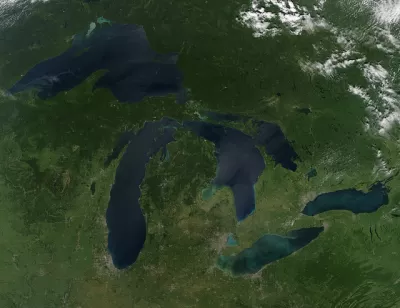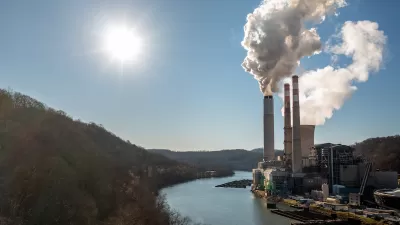A report by the Environmental Law and Policy Center (ELPC) shows a decrease in environmental enforcement in six Midwest states. The ELPC calls for increased funding. The EPA states the claims errors in data reporting are responsible for the drop.

The U.S. Environmental Protection Agency (EPA) is relaxing environmental enforcement, staffing, and spending in six Great Lakes states, according to a report published by the Environmental Law and Policy Center (ELPC).
The EPA's Region 5, which includes Wisconsin, Minnesota, Michigan, Illinois, Indiana, and Ohio, opened fewer environmental enforcement cases since 2017. "The number of cases opened by the agency had hovered at roughly 300 or more until fiscal year 2016 when cases dropped to an average of 230. The group said the data shows there’s also been a sharp increase in the number of major permitted facilities found in significant noncompliance with the Clean Water Act since fiscal year 2017," writes Danielle Kaeding.
EPA funding has declined since the Trump administration took office, resulting in a reduction in fines, civil penalties, and staff, according to the article. State pollution programs have seen a similar drop in funding, falling from about $107 million in 2008 to about $69 million in the 2018 fiscal year.
An EPA spokesperson stated that data reporting issues are "a key reason for recent increases in reported rates of significant noncompliance in Region 5." The agency aims to work with noncompliant permitted facilities to reduce the current rate of sewage overflows by half by 2022.
Howard Learner, executive director of ELPC, argues that the numbers don't add up. Learner asks that the EPA request additional funding from Congress to maintain its resources in addition to spending all currently available funding.
FULL STORY: Environmental Enforcement Down in Midwest

Alabama: Trump Terminates Settlements for Black Communities Harmed By Raw Sewage
Trump deemed the landmark civil rights agreement “illegal DEI and environmental justice policy.”

Planetizen Federal Action Tracker
A weekly monitor of how Trump’s orders and actions are impacting planners and planning in America.

Why Should We Subsidize Public Transportation?
Many public transit agencies face financial stress due to rising costs, declining fare revenue, and declining subsidies. Transit advocates must provide a strong business case for increasing public transit funding.

Understanding Road Diets
An explainer from Momentum highlights the advantages of reducing vehicle lanes in favor of more bike, transit, and pedestrian infrastructure.

New California Law Regulates Warehouse Pollution
A new law tightens building and emissions regulations for large distribution warehouses to mitigate air pollution and traffic in surrounding communities.

Phoenix Announces Opening Date for Light Rail Extension
The South Central extension will connect South Phoenix to downtown and other major hubs starting on June 7.
Urban Design for Planners 1: Software Tools
This six-course series explores essential urban design concepts using open source software and equips planners with the tools they need to participate fully in the urban design process.
Planning for Universal Design
Learn the tools for implementing Universal Design in planning regulations.
Caltrans
Smith Gee Studio
Institute for Housing and Urban Development Studies (IHS)
City of Grandview
Harvard GSD Executive Education
Toledo-Lucas County Plan Commissions
Salt Lake City
NYU Wagner Graduate School of Public Service





























